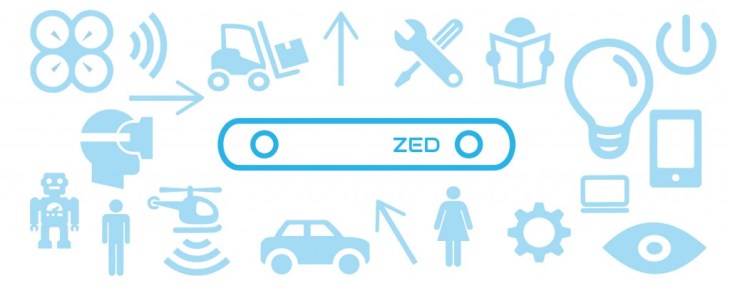Stereolabs’s ZED stereo camera is a Kinect-like sensor that allows developers to build depth-sensing into their devices. Say you want to build obstacle avoidance into a robot or drone. To do that, you need to have a basic idea of what’s around the machine. The easiest way to do that (assuming you don’t want to use radar or LiDAR) is by using a stereo camera.
The $449 camera connects over a standard USB 3.0 port, and Stereolabs then uses the GPU on a host computer to render a real-time depth map. Depending on the use case, you can choose between high-resolution 2.2k images at 15 frames per second, or opt for a lower resolution with higher frame rates (up to 120fps for 1280×480 videos).
The company is launching ZEDfu in our Hardware Battlefield at CES today. Stereolabs founder and CEO Cecile Schmollgruber tells us ZEDfu is a 3D-scanning app that combines the data from the camera with location data to create 3D maps on any given environment.
“The most accessible use for this is 3D scanning. In fact the update also includes a 3D scanning app for this reason,” Schmollgruber tells me. “But being able to map an environment in real time also paves the way for autonomous navigation, augmented reality and other emerging technologies.”
Stereolabs says its camera technology makes it easier for developers to get started with depth-mapping than similar products. Camera calibration (and re-calibration), for example, is a non-issue with the ZED, and the team argues that its computation algorithms are more efficient than those of its competitors. Schmollgruber tells me that she believes stereo vision has the advantage over some other sensing technologies because it is far more versatile and cheaper than LiDAR systems, for example.
The company currently offers SDKs for a number of platforms, including Windows and Linux. More interestingly, though, it also now offers third-party integrations with the Oculus Rift, for virtual reality/augmented reality applications, for example, as well as gateways to using ZED data in Matlab and specialized robotics and computer vision platforms like OpenCV and ROS.
Schmollgruber tells me that Stereolabs is also working with partners like NVIDIA to get its technology into cars, for example. “NVIDIA has integrated its powerful Tegra chip in top-tier car manufacturers and the ZED camera is optimized for this chip making it easier for car manufacturers to test the ZED,” she said.

